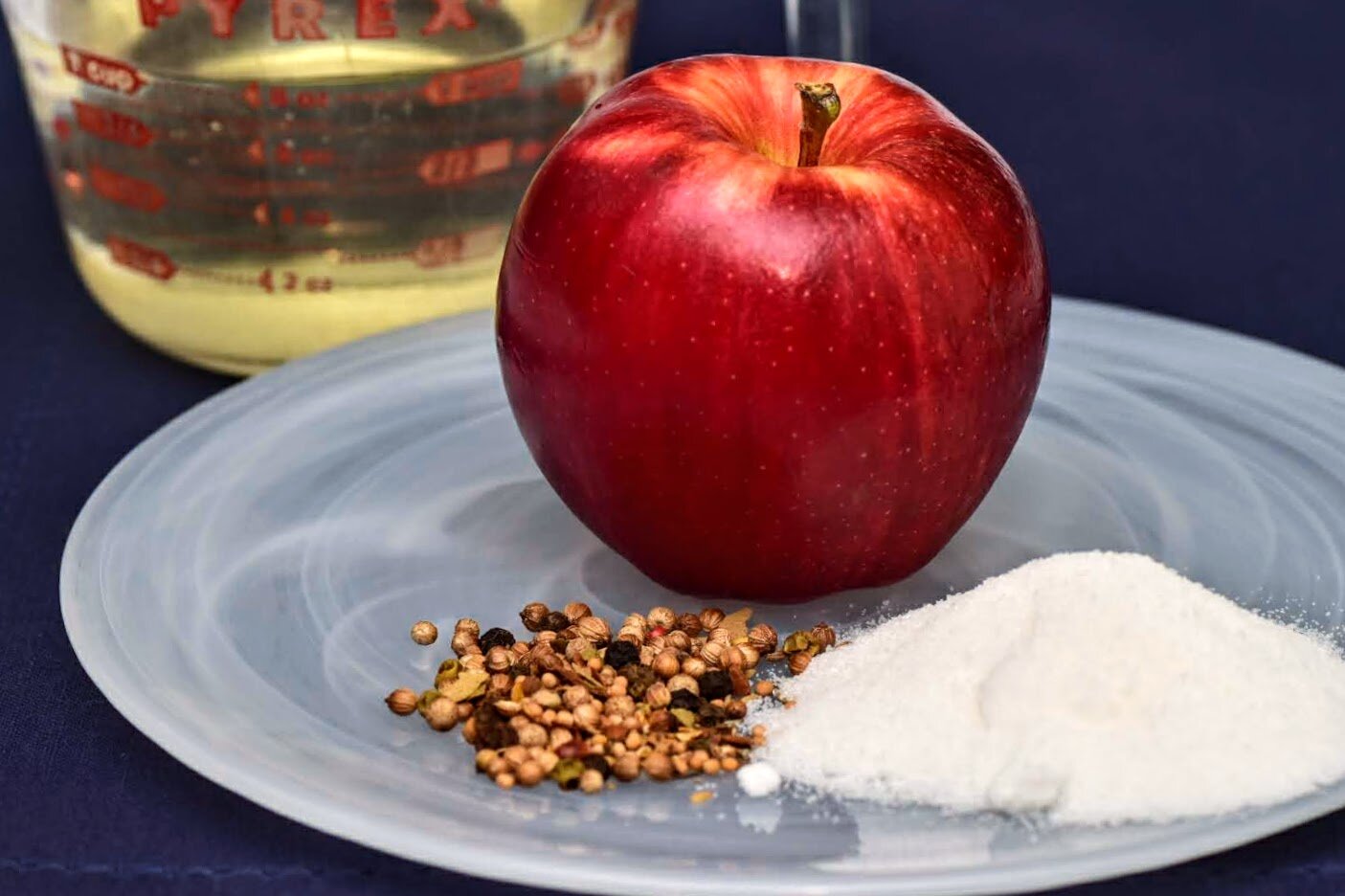This sweet-tangy-savory 5TastesTable cranberry relish/condiment with crunch and a hint of heat will stand up and complement the richest main course you serve for Thanksgiving or any other special meal. It’s not Grandma’s or Aunt Millie’s cranberry sauce, but if you want to try something new, give this one a try. It may become a family tradition! The list of ingredients is long, but it comes together quickly in less than a half-hour. Make it ahead and keep it in the fridge for up to a week.
Yield: 3 cups
Ingredients:
1 medium lemon
12-ounce bag of fresh or frozen cranberries
1 1/2 cups sugar
1/2 cup diced (1/4 inch) crystallized ginger (about 2 1/2 oz.)
1/3 cup finely chopped onion
1 garlic clove, minced
1 jalapeño pepper, seeded and minced
1 cinnamon stick (or 1/4 tsp. powdered cinnamon)
1/2 teaspoon dry mustard
1/4 cup Tawny Port (optional but recommended)
1/2 teaspoon salt
1/4 cup pomegranate arils
Preparation:
1. Grate the yellow zest from the lemon. Using a small sharp paring knife,
cut away and discard the thick white pith. Cut the lemon crosswise in half
and pick out the seeds. Dice the lemon into 1/4 inch pieces.
2. In a medium nonreactive saucepan, combine the cranberries, diced lemon
and zest, sugar, ginger, onion, garlic, jalapeño, cinnamon stick, mustard
and salt. Bring to boil over medium heat, stirring often to help dissolve
the sugar. Reduce the heat to low and simmer until the sauce is thick and
the cranberries have burst, 10 to 15 minutes.
3. Let the relish cool for 20 minute and process in a food processor until slightly chunky.
4. Cool completely and stir in the pomegranate arils. The relish can be prepared up to 1 week ahead, covered tightly and refrigerated.
5. Remove the cinnamon stick just before serving. Serve at room temperature.
Adapted from: https://www.epicurus.com/food/recipes/cranberry-ginger-and-lemon-chutney/























